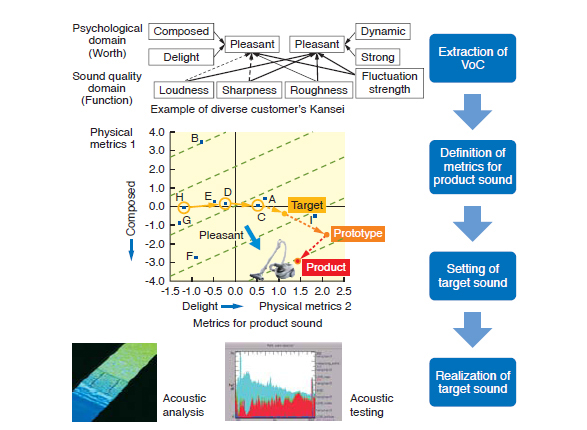- Back to the previous page
- Mechanical & Systems Engineering
Design Technology to Realize Pleasant Product Sounds
Sounds from electric appliances such as vacuum cleaners cannot be disregarded in the development of quality products. It is not easy to obtain pleasant mechanical sounds, however, when electric appliances are designed
according to the conventional trial-and-error method.
Toshiba has developed a design methodology to obtain pleasant mechanical sounds and applied it to products.
This methodology incorporates four steps as shown in the figure (below). The first step is to extract the voice of customer (VoC) data considering diverse customer’s Kansei(*) needs. The second step is to define the metrics for product sound by mapping the psychological metrics and physical metrics. The third step is to set the target sound in terms of the metrics by considering the tendency of the current product development process. The final step is to realize the target sound by applying mechanical design technologies.
The figure (top) shows two types of vacuum cleaners developed based on design for product sound quality. In order to realize the target sound, a newly developed supporting system and brush mechanism were applied in these products.
(*) Kansei is a Japanese word that refers to the human sensitivity of a sensory organ at which sensations or perceptions take place in response to stimuli (e.g. a product) from the external world. Kansei includes evoked senses, feelings, emotions and impressions.

Vacuum cleaners incorporating sound quality design

Procedure for realizing pleasant product sounds


